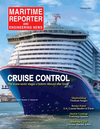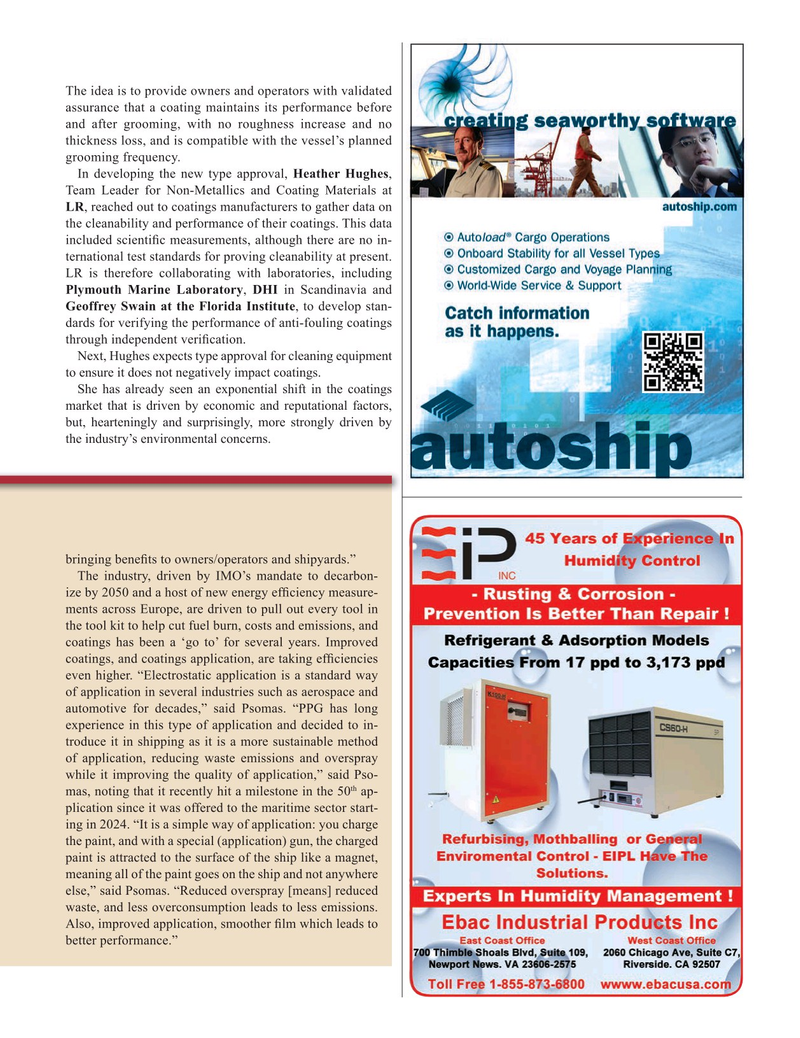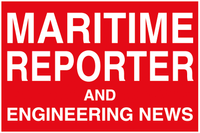
Page 23: of Maritime Reporter Magazine (February 2025)
Read this page in Pdf, Flash or Html5 edition of February 2025 Maritime Reporter Magazine
The idea is to provide owners and operators with validated assurance that a coating maintains its performance before and after grooming, with no roughness increase and no thickness loss, and is compatible with the vessel’s planned grooming frequency.
In developing the new type approval, Heather Hughes,
Team Leader for Non-Metallics and Coating Materials at
LR, reached out to coatings manufacturers to gather data on the cleanability and performance of their coatings. This data included scienti? c measurements, although there are no in- ternational test standards for proving cleanability at present.
LR is therefore collaborating with laboratories, including
Plymouth Marine Laboratory, DHI in Scandinavia and
Geoffrey Swain at the Florida Institute, to develop stan- dards for verifying the performance of anti-fouling coatings through independent veri? cation.
Next, Hughes expects type approval for cleaning equipment to ensure it does not negatively impact coatings.
She has already seen an exponential shift in the coatings market that is driven by economic and reputational factors, but, hearteningly and surprisingly, more strongly driven by the industry’s environmental concerns.
bringing bene? ts to owners/operators and shipyards.”
The industry, driven by IMO’s mandate to decarbon- ize by 2050 and a host of new energy ef? ciency measure- ments across Europe, are driven to pull out every tool in the tool kit to help cut fuel burn, costs and emissions, and coatings has been a ‘go to’ for several years. Improved coatings, and coatings application, are taking ef? ciencies even higher. “Electrostatic application is a standard way of application in several industries such as aerospace and automotive for decades,” said Psomas. “PPG has long experience in this type of application and decided to in- troduce it in shipping as it is a more sustainable method of application, reducing waste emissions and overspray while it improving the quality of application,” said Pso- th mas, noting that it recently hit a milestone in the 50 ap- plication since it was offered to the maritime sector start- ing in 2024. “It is a simple way of application: you charge the paint, and with a special (application) gun, the charged paint is attracted to the surface of the ship like a magnet, meaning all of the paint goes on the ship and not anywhere else,” said Psomas. “Reduced overspray [means] reduced waste, and less overconsumption leads to less emissions.
Also, improved application, smoother ? lm which leads to better performance.”
MR #2 (18-33).indd 23 1/31/2025 2:41:08 PM

 22
22

 24
24
